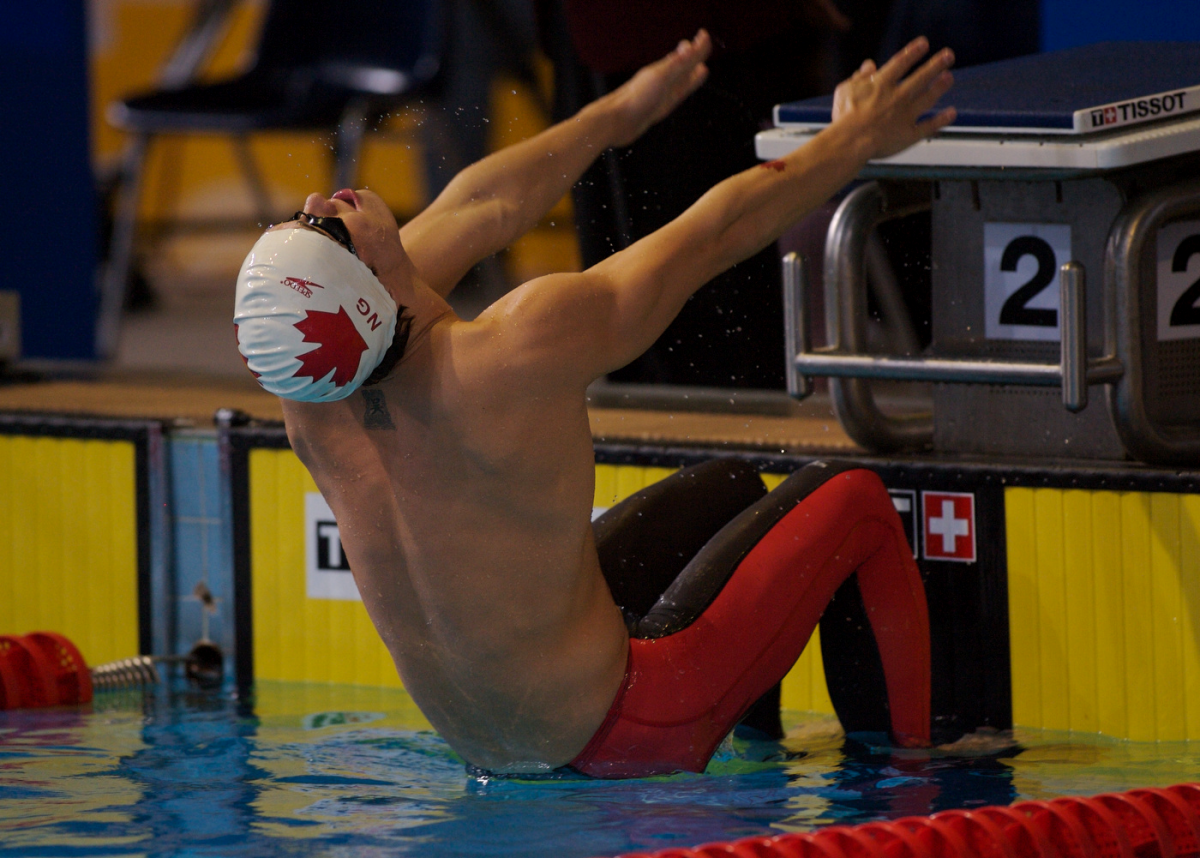 Shoulder pain or swimmer's shoulder is extremely common in swimmers resulting in pain at the front of the shoulder. This is occasionally due to tendinopathy of the biceps tendon, but more commonly impingement and tendinopathy of the supraspinatus tendon which helps stabilize the shoulder.
Shoulder pain or swimmer's shoulder is extremely common in swimmers resulting in pain at the front of the shoulder. This is occasionally due to tendinopathy of the biceps tendon, but more commonly impingement and tendinopathy of the supraspinatus tendon which helps stabilize the shoulder.
Shoulder impingement, once thought by many to be a result of anatomical factors now appears to be largely due to muscle weakness, dynamic muscle imbalance, swimming experience, faulty stroke technique, mental fatigue, functional ability, and structural makeup.
Control of the shoulder relies on neuromuscular balance and stabilization not only at the shoulder but at the shoulder blade and the thoracic spine. Thus, stability and proper shoulder blade positioning during the swimming stroke is key to enable maximal transfer of energy through the back and arm muscles. Weakness of the shoulder blade musculature leads to an abnormal shoulder blade alignment into an upward and forward position, which results in narrowing of the subacromial space and ultimately impingement of the supraspinatus tendon. Conversely, if the stabilizing muscles of the shoulder blade are weak and the short scapulohumeral muscles tight, there will be insufficient shoulder blade protraction and lateral rotation during the swimming stroke and, thus, a tendency for rotator cuff impingement.
Identifying and understanding the causes of swimmer's faults when a swimmer lacks flexibility through the thoracic spine and proper dynamic control of the shoulder blade is an important issue to address when determining the plan of action. The swimmer will continue to show faulty stroke techniques until a correction is made and should be acted on before the upper back, and or shoulder becomes painful.
 In the painful shoulder hand entry is further from the midline with the elbow dropped lower to the water, and is commonly mistaken for fatigue or laziness. The hand exits the water early due to lack of propulsion available from the serratus anterior as a result of poor shoulder blade alignment. The rhomboids also contribute to the early hand exit causing the hand to leave the water before it has reached the thigh usually with the elbow still bent.
In the painful shoulder hand entry is further from the midline with the elbow dropped lower to the water, and is commonly mistaken for fatigue or laziness. The hand exits the water early due to lack of propulsion available from the serratus anterior as a result of poor shoulder blade alignment. The rhomboids also contribute to the early hand exit causing the hand to leave the water before it has reached the thigh usually with the elbow still bent.
Many swimmers strive to lengthen their stroke in an attempt to improve propulsion. This is usually exacerbated when using hand paddles; however, the resultant shoulder adduction and internal rotation may lead to hypovascularity of the supraspinatus muscle increasing the risk of tendinopathy. Therefore, the stroke may need to be shortened to decrease injury.
The solutions to identifying, and correcting the swimmers faults begins at the thoracic spine, which must have good mobility as well as resting posture. To obtain a maximal reach of the arm the thoracic spine needs to extend and side bend away from the elevating arm to allow body roll. This is impaired if there is an abnormal rounding of the thoracic spine and will limit forward propulsion in freestyle and backstroke. Next, the shoulder blade resting position needs to be observed and corrected if the inside border is sitting more than three fingers from the spine. Observing the way the shoulder blade moves during the swimming stroke identifies if there is a part of the range that the muscles have decreased neuromuscular control, thus, creating biomechanical faults, muscle weakness, and ultimately contributing to impingement. The over-training of the pectoral muscles may lead to them shortening and may ultimately contribute to rounded shoulders or thoracic kyphosis. Maintaining good pectoral length as well as strength in the posterior shoulder muscles such as the middle and lower trapezius avoids this problem.
Training often centers on improving power, strength, and increasing distances while stability and motor control are forgotten. This generally happens because the stabilizing muscles are deep and close to the joint which makes them hard to identify and observe. Their training is also based on slow, controlled movement patterns which does not seem as rewarding as 'hard and fast' movements. However, 'hard and fast' movements are not effectively possible if the 'slow and controlled' movement is not in place first. Tuning a radio can be done with large turns of the dial but perfect sound comes when the dial is turned in a slow, controlled manner. Likewise gross movements of large muscles around the shoulder will still allow for movement to occur but couple this with the slow and controlled action of the deeper, smaller stabilizing muscles and there is a perfect harmonious stroke.
Dr. Gerrard is able to release many of the joint and muscular restrictions that cause these biomechanical dysfunctions, in an effort to improve your neuromuscular patterning and swimming performance.
